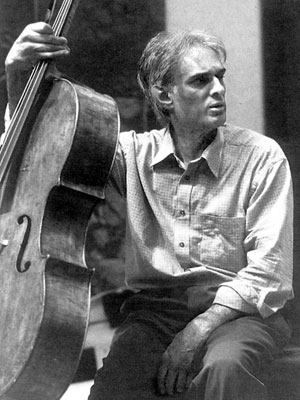Incredible journey
Rohan de Saram in “Conversations” with Joachim Steinheuer
An extraordinary book has recently been published where Joachim Steinheuer of Heidelberg University had Conversations with Rohan de Saram, the internationally renowned cellist. The book is extraordinary in many ways, not least because it reveals Rohan’s personal involvement and connection with musicians who had worked with the Schumann family who were themselves close friends of Brahms and the Joachim String Quartet, for whom Brahms wrote many works including his Violin Concerto, written for its leader Joseph Joachim, and his last orchestral work, the Double Concerto for violin, cello and orchestra, written for Joachim, and Robert Hausmann, the cellist of the Joachim Quartet.

Rohan de Saram: Heralding new challenges and new frontiers. Pic by Jane Baker
In his early years of studying with Gaspar Cassado in Florence, Italy, from 1951-57, Rohan met the D’Aranyi sisters, Jelly and Adila: Jelly d’Aranyi had works dedicated to her by Bartok and Ravel, including Ravel’s famous “Tzigane”, a landmark in the violin repertoire. As a young man, Rohan himself at this time also worked with composers from the first half of the 20th century, such as Kodaly, Poulenc and Shostakovich. In the second half of the 20th century Rohan worked with almost all the leading composers of that time, including Stockhausen, Boulez, Carter, Cage, Nono, Ligeti, Xenakis and Berio, who wrote the last of his famous series, the Sequenzas, for him, Sequenza XIV for solo cello, in which Berio paid homage to Rohan by incorporating in a unique way rhythms of the Gata Bera, the Kandyan drum. After giving the UK premiere of Berio’s orchestral work for solo cello and orchestra, “Il Ritorno degli Snovidenia”, Berio wrote to Rohan: “Your performance of Ritorno is splendid, but besides Ritorno, your sound, your perfect intonation, your phrasing and bowing technique make you a great performer of any music.”
The book provides in-depth details of Rohan’s unique experiences involving musicians from three centuries, the late 19th, both halves of the 20th and the beginning of the 21st century. This is all the more extraordinary because his parents, although keen amateur musicians themselves, had in mind a lawyer’s career for Rohan, following in his father’s footsteps. It so happened that his first cello teacher, a Polish refugee from Warsaw, Martin Hoherman, a very fine cellist, who played in the band at the Galle Face Hotel, Colombo, convinced Rohan’s parents that they should take him to Europe to train as a professional cellist. As all the details are referred to in the book, “Conversations”, it would be sufficient to say that this decision brought about a tremendous change in the family circumstances, both economically and for the future of the family, including his two brothers, Skanda and Druvi, and his sister Niloo. Later on, with Druvi, they toured as a duo within Europe, Japan and in the former Soviet Union.
Rohan’s early musical career brought him to England after he was awarded the Suggia Award at the age of sixteen to study with the conductor, Sir John Barbirolli, in London, and in Puerto Rico with Pablo Casals, who said of him: “There are few of his generation that have such gifts.” Before he was given this award, Rohan was already well-known as a musical prodigy, through his appearances on TV and through his concerts at, amongst other places, the Royal Festival Hall and at the Royal Academy of Music in London. During this time, until the end of the 1960s, Rohan was based in Oxford living with the music-loving Deneke sisters at a Victorian house called “Gunfield”. It was they who introduced him to the European musical traditions of the late 19th and early 20th century. Still in his early twenties; from Oxford Rohan continued to travel as a soloist and played throughout Europe, Asia, Australia, New Zealand, U.S.A., Canada and the former Soviet Union with the major orchestras and leading conductors of the world such as Sir John Barbirolli, Sir Adrian Boult, Sir Colin Davis, Zubin Mehta, Seiji Osawa and Sir Malcolm Sargent. His debut appearance in the U.S.A. was with the New York Philharmonic Orchestra at the Carnegie Hall at the invitation of Dimitri Mitropoulos. After a recital in America, the famous cellist Gregor Piatigorsky presented him with a special bow which he sometimes uses for concerts.

The young Rohan de Saram: Performing at the Grand Oriental Hotel, Colombo
In the late 1970s, Rohan became the cellist of the Arditti Quartet for whom hundreds of new works were written and premiered and many premiere recordings made. Whilst with the Arditti Quartet, they were awarded the Siemens prize for their services to music and a Grammy Award for their recording of works by Elliott Carter, including his Sonata for cello and piano and his work Figment for solo cello.
At the end of November 2005, Rohan left the Arditti Quartet in order to work with other artists, composers and friends around the world, bringing together music from a range of musical periods, both eastern and western, classical and contemporary, composed and improvised. In December 2004, Rohan was awarded an honorary D.Litt. from the University of Peradeniya, Sri Lanka, and in December 2005, he was awarded the Deshamanya, the national honour of Sri Lanka.
Rohan’s contribution to the world of music has been huge, as has his development of the cello repertoire, both for solo cello and chamber works for cello in combination with other instruments such as percussion, oboe, guitar, soprano, flute, with many new works written for him personally as well as for him together with his chamber music colleagues. It has been said of him: “de Saram is a Cello Phenomenon, one of the greatest cellists of our time” (Kolnische Rundshau).
Today Rohan de Saram lives in North London with his wife Rosemary, their daughter Sophia, a doctor as well as a passionate musician (cellist) in her spare time, their son Suren, a percussionist and the drummer in the band “Bombay Bicycle Club”, and Sophia’s husband, Janni (Janmeet) Rai Singh, a tennis player and coach.
The musical world is changing, with new faces and new challenges. Not surprisingly the increasingly strong influence of Eastern countries has reintroduced and encouraged Rohan’s playing of the Kandyan Drum, the Gata Bera or Magul Bera, thus allowing him to go back again to his roots.
It is a new era in his life, heralding new challenges and new frontiers. This recently published book “Conversations” has been described as “a treasure trove of musical jewels.” Indeed it is. It is available from the German publisher, wolke@wolke-verlag.de and from Amazon. For further biographical details, reviews, discography and repertoire see website: www.rohandesaram.co.uk
(Sir Christopher Ondaatje is the author of “The Man-Eater of Punanai” and “Woolf in Ceylon”)
Follow @timesonlinelk
comments powered by Disqus


